-
 Bitcoin
Bitcoin $107,352.1067
0.28% -
 Ethereum
Ethereum $2,429.3531
-0.90% -
 Tether USDt
Tether USDt $1.0001
-0.02% -
 XRP
XRP $2.1894
4.62% -
 BNB
BNB $646.7968
0.36% -
 Solana
Solana $147.4290
4.03% -
 USDC
USDC $0.9998
-0.02% -
 TRON
TRON $0.2756
1.52% -
 Dogecoin
Dogecoin $0.1630
1.14% -
 Cardano
Cardano $0.5612
1.18% -
 Hyperliquid
Hyperliquid $37.0580
-0.05% -
 Bitcoin Cash
Bitcoin Cash $496.9410
-0.09% -
 Sui
Sui $2.7318
3.19% -
 Chainlink
Chainlink $13.1503
0.58% -
 UNUS SED LEO
UNUS SED LEO $9.0766
0.55% -
 Avalanche
Avalanche $17.7220
1.46% -
 Stellar
Stellar $0.2380
1.52% -
 Toncoin
Toncoin $2.8439
0.38% -
 Shiba Inu
Shiba Inu $0.0...01143
1.84% -
 Litecoin
Litecoin $85.8053
1.47% -
 Hedera
Hedera $0.1483
2.70% -
 Monero
Monero $314.3240
2.12% -
 Bitget Token
Bitget Token $4.6725
0.77% -
 Dai
Dai $1.0000
0.00% -
 Polkadot
Polkadot $3.3555
1.28% -
 Ethena USDe
Ethena USDe $1.0001
0.02% -
 Uniswap
Uniswap $7.0890
2.64% -
 Pi
Pi $0.5355
-3.40% -
 Pepe
Pepe $0.0...09393
1.06% -
 Aave
Aave $256.8136
-1.90%
Web3 Terminology Quick Start: Language Preparation Before Entering the Metaverse
Web3 aims for a decentralized, user-controlled internet using blockchain, while the Metaverse offers immersive virtual experiences with NFTs and VR/AR technologies.
May 10, 2025 at 08:56 am
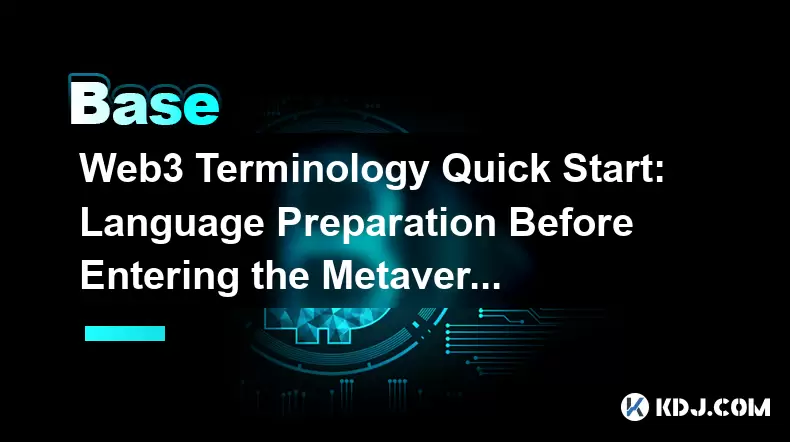
Web3 Terminology Quick Start: Language Preparation Before Entering the Metaverse
As the digital world evolves, understanding the language and terminology associated with Web3 and the Metaverse becomes crucial for anyone looking to engage with these technologies. This article serves as a quick start guide to familiarize you with key terms and concepts, preparing you for a deeper exploration into the world of decentralized technologies and virtual realities.
Understanding Web3
Web3 refers to the next iteration of the internet, a vision that aims to build a more decentralized and user-controlled web. Unlike Web2, where data is centralized and controlled by large corporations, Web3 leverages blockchain technology to distribute data and control across a network of users. This shift promises enhanced privacy, security, and user autonomy.
Key terms associated with Web3 include:
- Blockchain: A decentralized ledger of all transactions across a network. It is the foundational technology behind cryptocurrencies and other decentralized applications.
- Decentralized Applications (DApps): Applications that run on a blockchain or peer-to-peer network of computers rather than a single computer. DApps are often open-source, with no central authority controlling them.
- Smart Contracts: Self-executing contracts with the terms directly written into code. They automatically enforce and execute agreements between parties on the blockchain.
Navigating the Metaverse
The Metaverse is a collective virtual shared space, created by the convergence of virtually enhanced physical reality and physically persistent virtual space. It encompasses a wide range of experiences, from social interactions to economic activities, all within a digital environment.
Important terminology in the Metaverse includes:
- Virtual Reality (VR): A simulated experience that can be similar to or completely different from the real world. VR applications often involve the use of head-mounted displays (HMDs) to provide immersive experiences.
- Augmented Reality (AR): An interactive experience where real-world environments are enhanced with computer-generated perceptual information. AR overlays digital information on top of the physical world, typically through devices like smartphones or AR glasses.
- Non-Fungible Tokens (NFTs): Unique digital assets that represent ownership of a specific item or piece of content. NFTs are used in the Metaverse to authenticate and trade digital art, virtual real estate, and other unique items.
Decentralized Finance (DeFi)
Decentralized Finance, or DeFi, refers to financial services built on blockchain technology, aiming to create an open and accessible financial system. DeFi platforms allow users to lend, borrow, and trade assets without the need for traditional financial intermediaries.
Key terms in DeFi include:
- Yield Farming: A practice where users stake or lend their cryptocurrency assets in a DeFi protocol to earn returns, often in the form of additional tokens.
- Liquidity Pools: Collections of funds locked in a smart contract to facilitate trading on decentralized exchanges. Users can contribute to these pools and earn fees based on the trading activity.
- Stablecoins: Cryptocurrencies designed to minimize the volatility of the price of the stablecoin, relative to some "stable" asset or basket of assets. They are often pegged to a fiat currency like the US dollar.
Digital Identity and Ownership
In the realm of Web3 and the Metaverse, digital identity and ownership are critical concepts. These technologies allow for the creation and management of digital personas and assets in a secure and verifiable manner.
Relevant terms include:
- Self-Sovereign Identity (SSI): A model for managing digital identities where individuals or entities have full control over their personal data. SSI uses blockchain technology to provide a decentralized and secure way to manage identities.
- Digital Wallets: Software programs or physical devices that store the keys to your cryptocurrencies and other digital assets. They are essential for managing and interacting with your digital identity and assets in the Web3 ecosystem.
- Tokenization: The process of converting rights to an asset into a digital token on a blockchain. Tokenization can represent ownership of real-world assets, such as real estate or art, in the digital realm.
Interoperability and Standards
Interoperability is a key feature of Web3 and the Metaverse, allowing different systems and applications to communicate and work together seamlessly. This is facilitated by various standards and protocols.
Important terms related to interoperability include:
- Cross-Chain Technology: Technologies that enable the transfer of assets and data between different blockchains. This is crucial for creating a unified and interconnected Web3 ecosystem.
- Decentralized Identifiers (DIDs): A type of identifier that enables verifiable, self-sovereign digital identities. DIDs are designed to be interoperable across different systems and platforms.
- InterPlanetary File System (IPFS): A protocol and network designed to create a permanent and decentralized method of storing and sharing files. IPFS is often used in Web3 applications to host content that is resistant to censorship and downtime.
Getting Started with Web3 and the Metaverse
To begin your journey into Web3 and the Metaverse, you'll need to familiarize yourself with the basic tools and platforms. Here are some steps to get started:
- Choose a Blockchain: Start by selecting a blockchain to explore. Ethereum is a popular choice due to its robust ecosystem and wide range of applications.
- Set Up a Digital Wallet: Download and set up a digital wallet that supports the blockchain you've chosen. Popular options include MetaMask for Ethereum and Trust Wallet for multiple blockchains.
- Explore DApps and DeFi Platforms: Begin interacting with decentralized applications and DeFi platforms. You can start with simple actions like swapping tokens on a decentralized exchange or lending assets on a DeFi lending platform.
- Engage with the Metaverse: Look for virtual worlds and social platforms within the Metaverse. Platforms like Decentraland and The Sandbox offer immersive experiences where you can buy virtual land, create content, and interact with other users.
By understanding and using these terms and tools, you'll be well-prepared to navigate the evolving landscape of Web3 and the Metaverse.
Frequently Asked Questions
Q: How does Web3 differ from Web2 in terms of user control?
A: Web3 aims to give users more control over their data and digital interactions by leveraging decentralized technologies. In Web2, data is often controlled by centralized entities like social media platforms and tech giants. In contrast, Web3 uses blockchain to distribute data control across a network, allowing users to have sovereignty over their personal information and digital assets.
Q: Can I use traditional payment methods in the Metaverse?
A: While some platforms within the Metaverse may accept traditional payment methods like credit cards, the ecosystem primarily relies on cryptocurrencies and digital assets. To fully participate in the Metaverse, it's beneficial to understand and use cryptocurrencies, as they are the standard for transactions and asset ownership within these virtual spaces.
Q: What are the risks associated with DeFi?
A: DeFi platforms, while offering innovative financial services, come with several risks. These include smart contract vulnerabilities, where flaws in the code can lead to loss of funds, liquidity risks where assets may become difficult to sell, and regulatory risks as governments may impose new rules on these platforms. It's important to conduct thorough research and understand these risks before engaging with DeFi.
Q: How can I protect my digital identity in Web3?
A: Protecting your digital identity in Web3 involves several steps. First, use strong, unique passwords for your digital wallets and accounts. Second, enable two-factor authentication (2FA) wherever possible. Third, be cautious with phishing attempts and never share your private keys or seed phrases. Finally, consider using decentralized identity solutions like Self-Sovereign Identity (SSI) to maintain control over your personal data.
Disclaimer:info@kdj.com
The information provided is not trading advice. kdj.com does not assume any responsibility for any investments made based on the information provided in this article. Cryptocurrencies are highly volatile and it is highly recommended that you invest with caution after thorough research!
If you believe that the content used on this website infringes your copyright, please contact us immediately (info@kdj.com) and we will delete it promptly.
- AI Token Taking Over: Why Smart Investors are Eyeing Audited Crypto Ruvi AI
- 2025-06-29 04:30:12
- Ethereum, AI Tokens, and Growth: Is Ruvi AI the Next Big Thing?
- 2025-06-29 04:30:12
- Hedera Price: Decoding Technical Signals and Upside Potential
- 2025-06-29 04:50:13
- Altcoin Rally on the Horizon? Decoding the Potential Boom
- 2025-06-29 04:35:12
- Vitalik Buterin vs. Worldcoin: The Battle for Pseudonymity's Soul
- 2025-06-29 04:52:14
- Crypto Coins: Market Shifts and the Best Picks in 2025
- 2025-06-29 05:05:12
Related knowledge
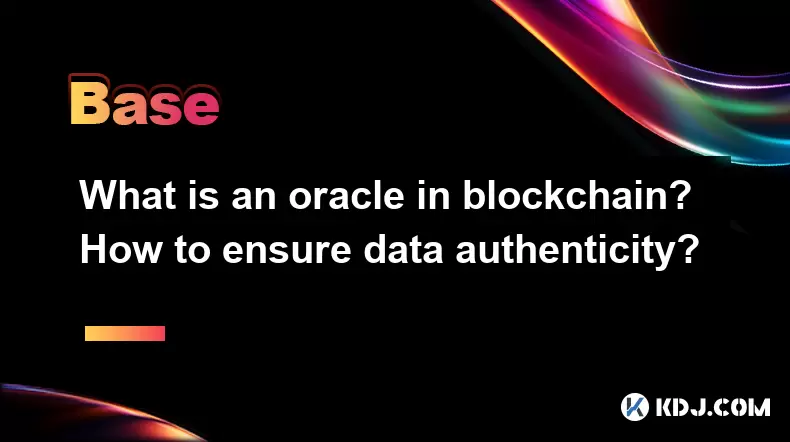
What is an oracle in blockchain? How to ensure data authenticity?
Jun 19,2025 at 08:49pm
Understanding the Role of an Oracle in BlockchainIn the context of blockchain technology, an oracle serves as a bridge between the blockchain and external data sources. While blockchains are inherently secure and decentralized, they cannot access real-world information on their own. Oracles enable smart contracts to interact with off-chain data such as ...
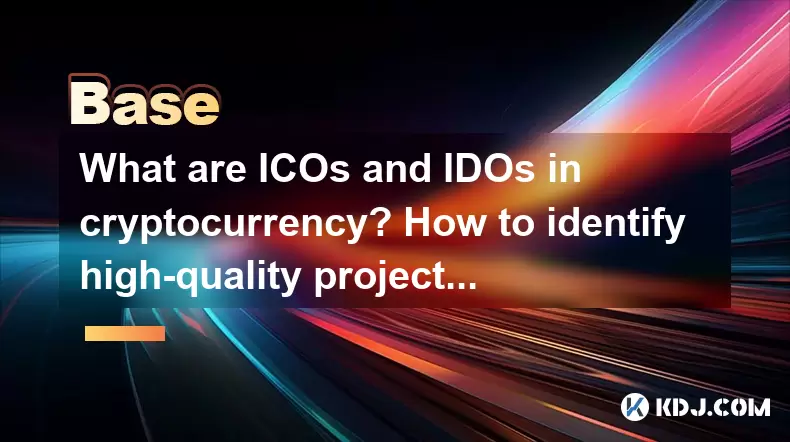
What are ICOs and IDOs in cryptocurrency? How to identify high-quality projects?
Jun 22,2025 at 11:49am
Understanding ICOs in CryptocurrencyInitial Coin Offerings (ICOs) are fundraising mechanisms used by cryptocurrency startups to raise capital for their projects. In an ICO, a company creates and sells its own tokens to investors in exchange for established cryptocurrencies like Bitcoin or Ethereum. The process typically involves the release of a whitepa...
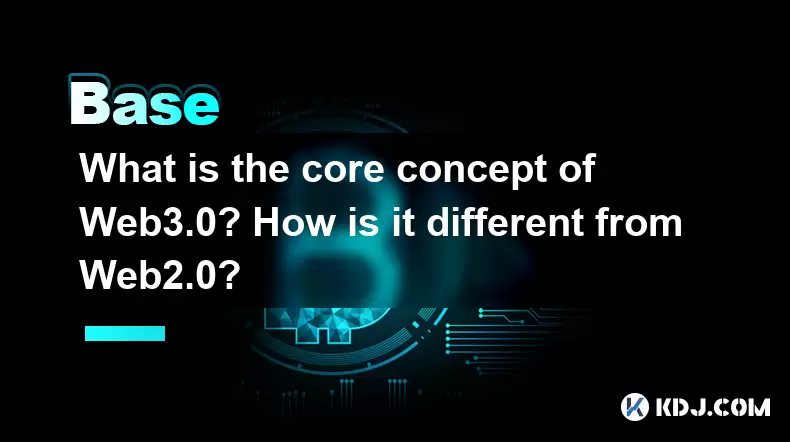
What is the core concept of Web3.0? How is it different from Web2.0?
Jun 21,2025 at 05:56pm
Decentralization as the Foundation of Web3.0The core concept of Web3.0 revolves around decentralization, which fundamentally challenges the centralized architecture of Web2.0. In Web3.0, control and ownership are distributed across a network rather than being held by a central authority or corporation. This is achieved primarily through blockchain techn...
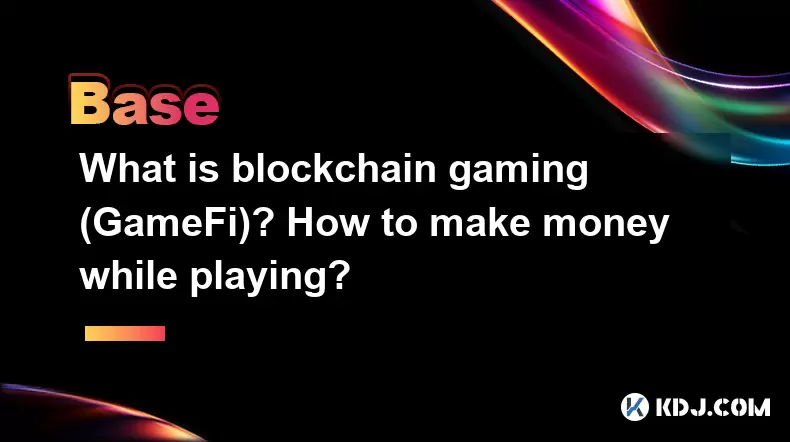
What is blockchain gaming (GameFi)? How to make money while playing?
Jun 20,2025 at 07:56am
Understanding Blockchain Gaming (GameFi)Blockchain gaming, often referred to as GameFi, is a fusion of blockchain technology and video games. It enables players to own in-game assets through non-fungible tokens (NFTs) and earn rewards via cryptocurrencies or token-based systems. Unlike traditional games where items are controlled by centralized develope...
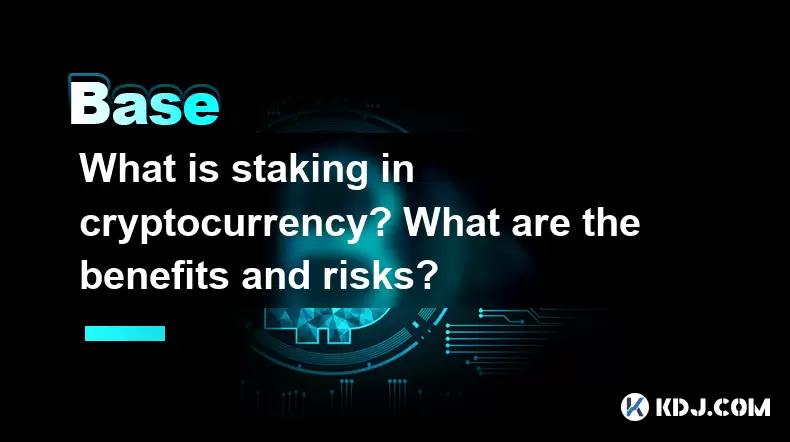
What is staking in cryptocurrency? What are the benefits and risks?
Jun 22,2025 at 10:01am
Understanding the Concept of Staking in CryptocurrencyStaking in cryptocurrency refers to the process of actively participating in transaction validation on a blockchain network that uses a Proof-of-Stake (PoS) consensus mechanism. Instead of miners competing to solve complex mathematical puzzles as in Proof-of-Work systems like Bitcoin, PoS blockchains...
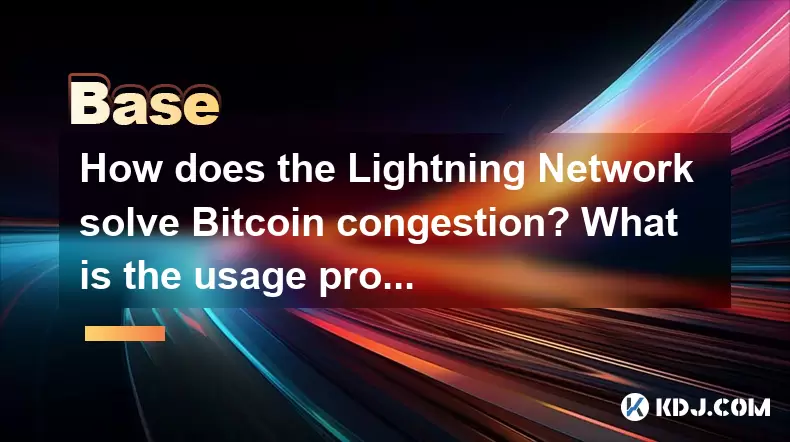
How does the Lightning Network solve Bitcoin congestion? What is the usage process?
Jun 23,2025 at 06:21pm
Understanding Bitcoin Network CongestionBitcoin, as a decentralized digital currency, operates on a blockchain that records every transaction in a public ledger. Each block has a limited size, typically 1 megabyte, which allows for only a certain number of transactions per second (TPS). When the number of transactions increases, the network becomes cong...

What is an oracle in blockchain? How to ensure data authenticity?
Jun 19,2025 at 08:49pm
Understanding the Role of an Oracle in BlockchainIn the context of blockchain technology, an oracle serves as a bridge between the blockchain and external data sources. While blockchains are inherently secure and decentralized, they cannot access real-world information on their own. Oracles enable smart contracts to interact with off-chain data such as ...

What are ICOs and IDOs in cryptocurrency? How to identify high-quality projects?
Jun 22,2025 at 11:49am
Understanding ICOs in CryptocurrencyInitial Coin Offerings (ICOs) are fundraising mechanisms used by cryptocurrency startups to raise capital for their projects. In an ICO, a company creates and sells its own tokens to investors in exchange for established cryptocurrencies like Bitcoin or Ethereum. The process typically involves the release of a whitepa...

What is the core concept of Web3.0? How is it different from Web2.0?
Jun 21,2025 at 05:56pm
Decentralization as the Foundation of Web3.0The core concept of Web3.0 revolves around decentralization, which fundamentally challenges the centralized architecture of Web2.0. In Web3.0, control and ownership are distributed across a network rather than being held by a central authority or corporation. This is achieved primarily through blockchain techn...

What is blockchain gaming (GameFi)? How to make money while playing?
Jun 20,2025 at 07:56am
Understanding Blockchain Gaming (GameFi)Blockchain gaming, often referred to as GameFi, is a fusion of blockchain technology and video games. It enables players to own in-game assets through non-fungible tokens (NFTs) and earn rewards via cryptocurrencies or token-based systems. Unlike traditional games where items are controlled by centralized develope...

What is staking in cryptocurrency? What are the benefits and risks?
Jun 22,2025 at 10:01am
Understanding the Concept of Staking in CryptocurrencyStaking in cryptocurrency refers to the process of actively participating in transaction validation on a blockchain network that uses a Proof-of-Stake (PoS) consensus mechanism. Instead of miners competing to solve complex mathematical puzzles as in Proof-of-Work systems like Bitcoin, PoS blockchains...

How does the Lightning Network solve Bitcoin congestion? What is the usage process?
Jun 23,2025 at 06:21pm
Understanding Bitcoin Network CongestionBitcoin, as a decentralized digital currency, operates on a blockchain that records every transaction in a public ledger. Each block has a limited size, typically 1 megabyte, which allows for only a certain number of transactions per second (TPS). When the number of transactions increases, the network becomes cong...
See all articles

























































































